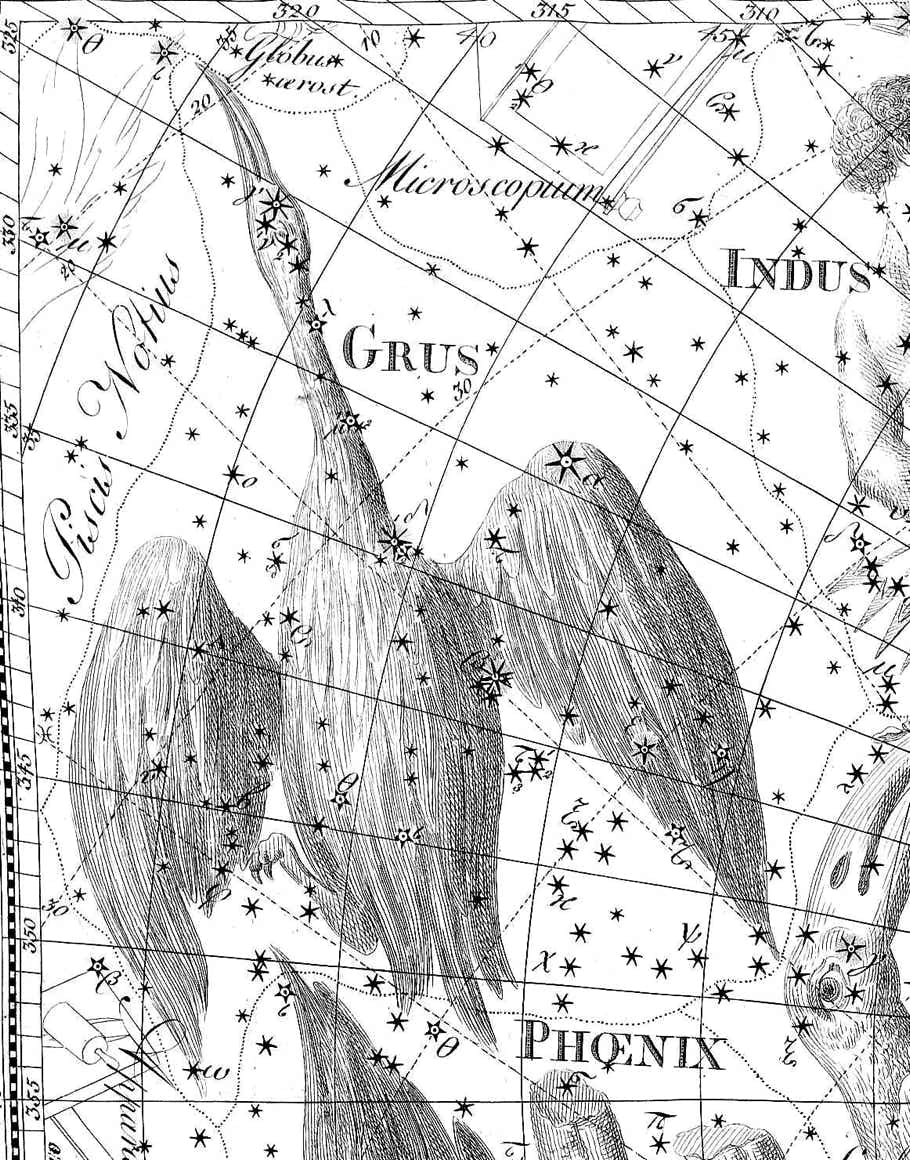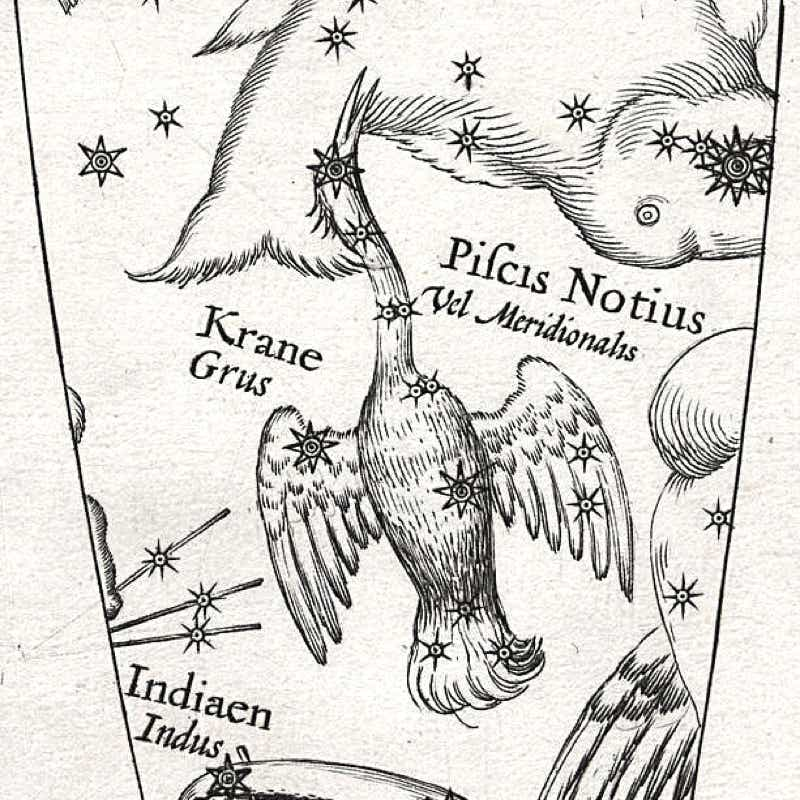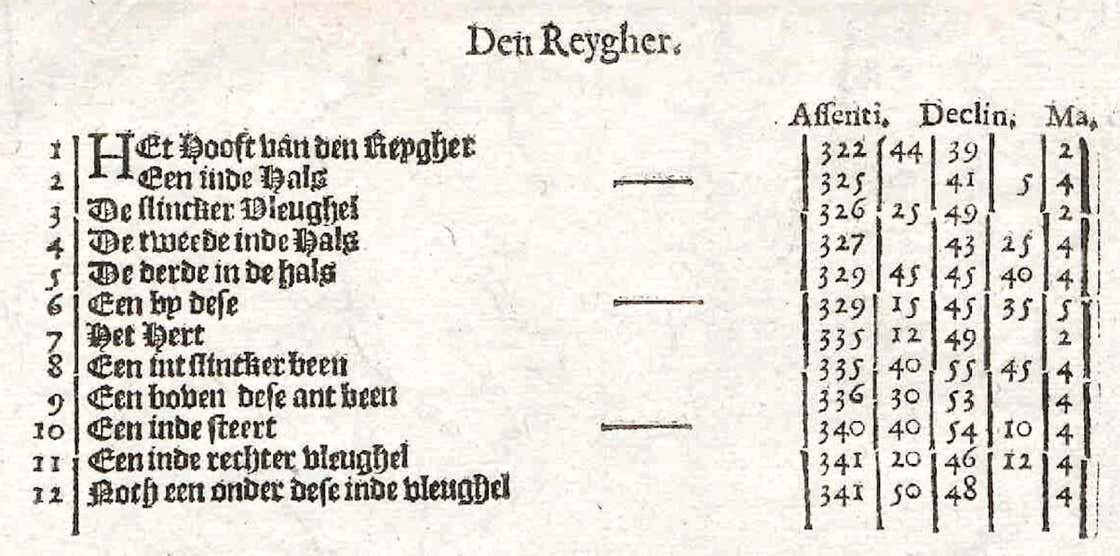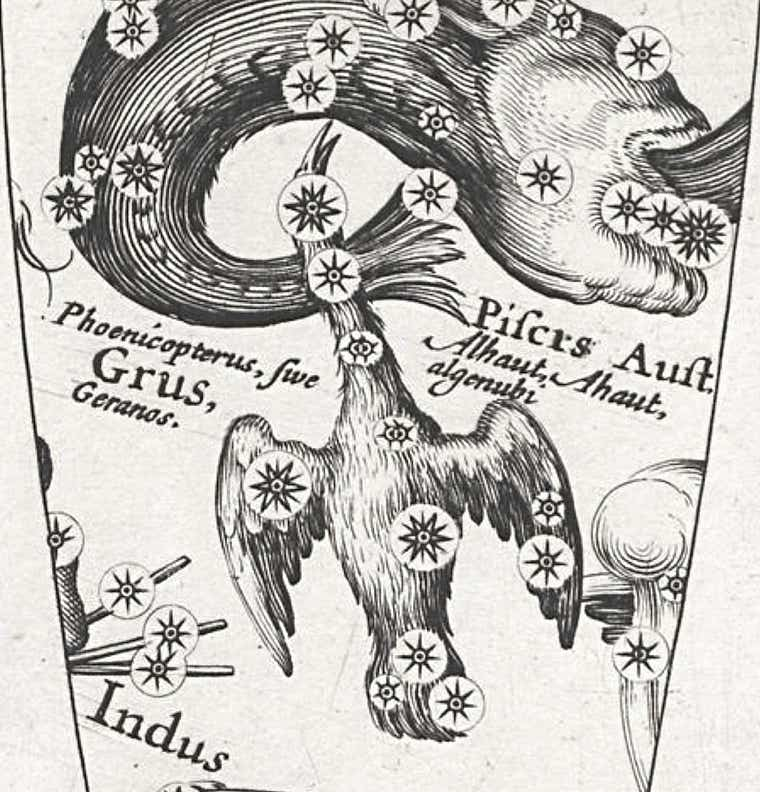
Genitive: Gruis
Abbreviation: Gru
Size ranking: 45th
Origin: The 12 southern constellations of Keyser and de Houtman
One of the 12 constellations introduced at the end of the 16th century by the Dutch navigators Pieter Dirkszoon Keyser and Frederick de Houtman after their pioneer observations of the southern skies. Grus represents a long-necked wading bird, the crane. Possibly they had in mind the sarus crane of India and southeast Asia, which is the largest species of crane, standing nearly 6ft tall.
The constellation was first shown on a celestial globe by Petrus Plancius and Jodocus Hondius in 1598 under the name Krane Grus, respectively Dutch and Latin words for crane. De Houtman called it Den Reygher, the heron, in his southern star catalogue of 1603, but Johann Bayer adopted the original name Grus for the constellation in his Uranometria atlas of 1603.
A second alternative title, Phoenicopterus, the flamingo, first appeared in 1605 in the Cosmographiae Generalis of Paul Merula (1558–1607), the librarian of Leiden University, who got his information on the new southern constellations from Plancius. The name Phoenicopterus appeared again on a globe produced around 1625 by the Dutch globe maker Pieter van den Keere (1571–c.1646) (Petrus Kaerius in Latin), another Plancius collaborator. Hence we can deduce that this alternative name originated with Plancius. However, probably due to the influence of Bayer’s highly popular atlas, the original identification as a crane won out.
Grus cranes its neck on Chart XX of the Uranographia of Johann Bode (1801).
Stars of Grus
Grus was formed from stars south of Piscis Austrinus, the Southern Fish. In fact, the star we now know as Gamma Gruis, marking the crane’s head, was taken over from the original Greek Piscis Austrinus – Ptolemy described it in the Almagest as lying on the tip of the fish’s tail. Bayer and others straightened out the tail of Piscis Austrinus so that it did not overlap with the head of Grus.
The constellation’s brightest star, second-magnitude Alpha Gruis, lies on the bird’s southerly wing. It is named Alnair, from an abbreviation of the Arabic al-nayyir min dhanab al-ḥūt meaning ‘the bright one from the fish’s tail’. This name arose because Arab astronomers in the 16th century had extended the tail of Piscis Austrinus southwards beyond the Ptolemaic limits of the constellation; it was never part of the original Greek version.
There are no legends associated with Grus, but in Greek mythology the crane was sacred to Hermes.
Chinese associations
Being so far south, the stars of Grus barely featured in the Chinese constellation system. However, part of the Chinese constellation Baijiu lay in this area, representing a kind of celestial skip for waste. Baijiu consisted of four stars forming a tub shape. The present-day Gamma Gruis could have been one of them, and possibly Lambda Gruis was a member too. The rest of Baijiu lay to the north in Piscis Austrinus.
© Ian Ridpath. All rights reserved
Grus seems to peck at the southern fish, top, on this gore from Petrus Plancius’s celestial globe of 1598. (Nicolai Collection of the State Library of Württemberg, Stuttgart)
Grus was shown under the name Den Reygher, the heron, in Frederick de Houtman’s southern star catalogue of 1603. He assigned it 12 stars. For a translation of the descriptions, see here.
The Dutch historian and geographer Paul Merula (1558–1607) gave Grus the alternative name Phoenicopterus in his Cosmographiae Generalis of 1605.







